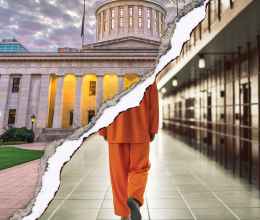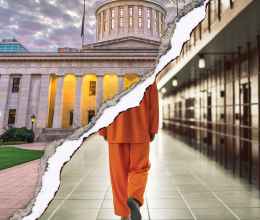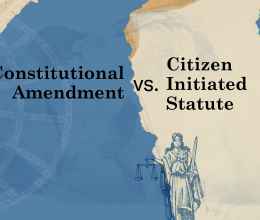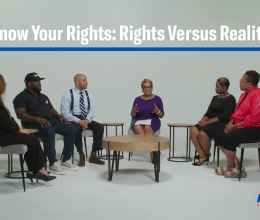Restorative Justice is getting a lot of attention lately. But it’s more than a buzzword. Let’s talk about what effective restorative justice practice would mean for Ohio students.
What is Restorative Justice?
Restorative Justice (or “RJ”) is a way of thinking about behavior correction in a way that emphasizes healing the harm done—whether to a person, group, or object—rather than punishment for the sake of punishment itself. At its center, it is a flexible way of thinking, rather than a set of guidelines or steps.
Restorative Justice can be traced globally throughout history, appearing most prominently in ancient Native American tribes, African villages, Asian communities, Celtic civilizations and countless other cultures. The guiding principle of Restorative Justice is acting in a way that builds community culture. This purpose is dual pronged: (1) The community is strongest when its members communicate openly and feel heard, and (2) the community both does not want and cannot afford to lose any of its members. To this end, restorative justice seeks not to isolate or incarcerate any community members for causing harm to the group, because it doesn’t actually make the community stronger, and it results in the (often permanent) isolation or loss of a community member.
Rather, by making the individual face the effects of their actions and work to provide reparations for their misbehavior, the community’s bond strengthens as a result of the communication, trust, and understanding that it takes to engage critically with conflict. In many cases, restorative justice helps the community understand the baggage that each member brings to the table, and allows the group to help each other get the support and services they each need. The idea behind restorative justice is that when the root of the problem that causes the misbehavior is addressed, the behavioral outburst will not occur in the future; and the biases community members carry, when acknowledged, can be managed and/or minimized.
Restorative Justice is inherently a collaborative process that works best with the active participation of all parties. At its heart, the goal is not to create a new punitive justice system, but to equip community members with tools to resolve conflict in a non-violent, respectful, communicative manner. The impact of an effective restorative justice system is a culture change from fear-based behavior to respect-based behavior.
How does restorative justice work in schools?
In schools, the primary job of restorative justice is not to change the actions of children, but to change the behavior of the adults who respond. When adults approach petit misbehaviors with understanding that children’s inevitable mistakes are a learning and growth opportunity, rather than a failure in upbringing, children respond positively. Instead of hiding the mistake in the future or harboring resentment, children who see restorative justice practices often understand the “wrongness” of the action more effectively than under punitive systems, and most students report feeling more secure, heard, and respectful of their community. Instilling communication and critical conflict resolution skills in early development deemphasizes the need for punitive measures at a later age.
Restorative justice can take many forms: parent-teacher conferences, restoration circles, restitution, and supplemental training, among others. The most common practice is called a “circle.” An effective circle is used both when there is conflict or simply as a way to share experiences with the community. In schools, circles can be used to supplement lessons by connecting it to student experiences or to encourage classroom participation. Because circles a fundamentally premised on listening, respect, and critical thinking, students engage with educational material on the social-emotional level as well as on the academic level. For example, if a history teacher uses a circle as part of her lesson on the Civil Rights Movement, she may be able to share her account of living through it in a way more memorable and vivid than a textbook might describe, which can help students critically engage with the material by connecting it to their own modern experiences with racial justice protests.
Many districts across the country have implemented restorative justice practices with great success, notably: Chicago, New York City, Milwaukee, Oakland, Buffalo, and many others. Students often report that restorative justice practices help reduce misbehavior around them (specifically fighting, theft, and vandalism). Many communities report reduced conflict and crime, as students use restorative practices learned in schools in their interactions with the larger community.
Teachers are already at capacity, so who should handle these issues?
Between creating curricula and teaching our youth as well as acting as informal counselors, mentors, and coaches, teachers have enough on their plate. The responsibility of leading restorative circles and direct conflict resolution is best suited to student support personnel such as RJ facilitators, counselors, or social workers. While teachers shouldn’t be the primary RJ implementers, schools should train them in the restorative mindset and circle practices because it benefits (1) teacher response to classroom misbehavior and (2) student lesson supplementation and positive learning support.
Using student support staff rather than teachers to spearhead RJ is critical to a program’s success. Of the districts that have implemented the practice, all have at least one Restorative Justice coordinator employed by the district to oversee the program across all schools, supplemented by facilitators or “coaches” that run day-to-day restorative justice on each campus. In some districts, an RJ coach’s job is running circles. In others, leading circles is reserved for counselors or social workers, whose job responsibilities lend naturally to RJ use. Regardless of individual structure, the district coordinator and campus-specific coaches (often in tandem with an outside expert) conduct various workshops tailored to teachers, counselors, social workers, and administration to equip staff to handle complex restorative justice conversations.
What is a practical example of restorative justice?
Say a student is caught stealing beakers from a science teacher’s stockroom. Under a restorative justice framework, the student would be required to return the equipment and replace any that were damaged or provide commensurate volunteering with the teacher to pay for the cost of the broken beaker. Additionally, the student would meet with the teacher, the campus restorative justice facilitator, and any other affected parties for the group to hear the impact of the action. The teacher might tell the student that it put the class experiment at risk, or that now the entire class won’t be prepared for that topic on the state science test. The student would be given an opportunity to explain their side, offer an apology, and would be given an opportunity to work with school officials to get support they need to avoid future trouble.
Say a student is tardy for class 15 times over the course of a month. The teacher, student, and restorative justice coach would meet with the student to figure out why the student is habitually late. The teacher can inform the student of the risks of being tardy or truant, and the student might have a chance to tell staff about a lack of transportation to school or a family illness that takes up most of the student’s time in the morning. The school then can help provide the student with resources to alleviate the stress on the student (e.g. sending a school bus, scheduling their free period first thing in the morning) and prevent future tardies.
But doesn’t punishment teach kids right from wrong?
There is no evidence to suggest that punitive measures increase a child’s understanding of what is “right” and “wrong.” In fact, punitive measures do not decrease rates of future misbehavior, while the use of restorative justice practices after initial misbehavior frequently results in reduced rates of future misbehavior. This result is partially due to the fact that restorative justice harm reparation is often the natural, direct consequence of a misbehavior (e.g. scrubbing graffiti off the wall you spray-painted), while punitive measures are generally inflexible and unrelated, or counterintuitive, to the offense (e.g. prescribing detention for fighting, or giving suspension for excessive tardies).
If punitive measures by school officials are at odds with RJ principles, it follows that police are fundamentally incompatible with restorative justice. Police, especially in schools, are used to resolve discipline conflicts by arrests, restraint, court referral, or general presence. Police are a physical symbol of the punitive carceral system, which is in direct opposition to RJ. Restorative justice cannot truly be implemented when school policing is present. Teachers cannot use RJ as intended when the option to call police to resolve misbehavior persists. The restorative justice mindset cannot be achieved in half-measures; schools cannot implement RJ as an alternative to punitive justice when the most frequent cause of students’ involvement in the school-to-prison pipeline are present.
Removal of police from schools and restorative practice implementation can occur simultaneously. The amount of money a district spends on police can be diverted to hiring additional counselors, RJ coaches, and student support staff. Regardless, allocating money toward RJ practices saves districts money in the long run by reducing student absences and criminal charges (and by extension, per pupil state funding) among other factors.
In the end, restorative justice looks different for every school and every student. But the main principle remains the same: isolating community members when they mess up doesn’t make the community better, support does.







